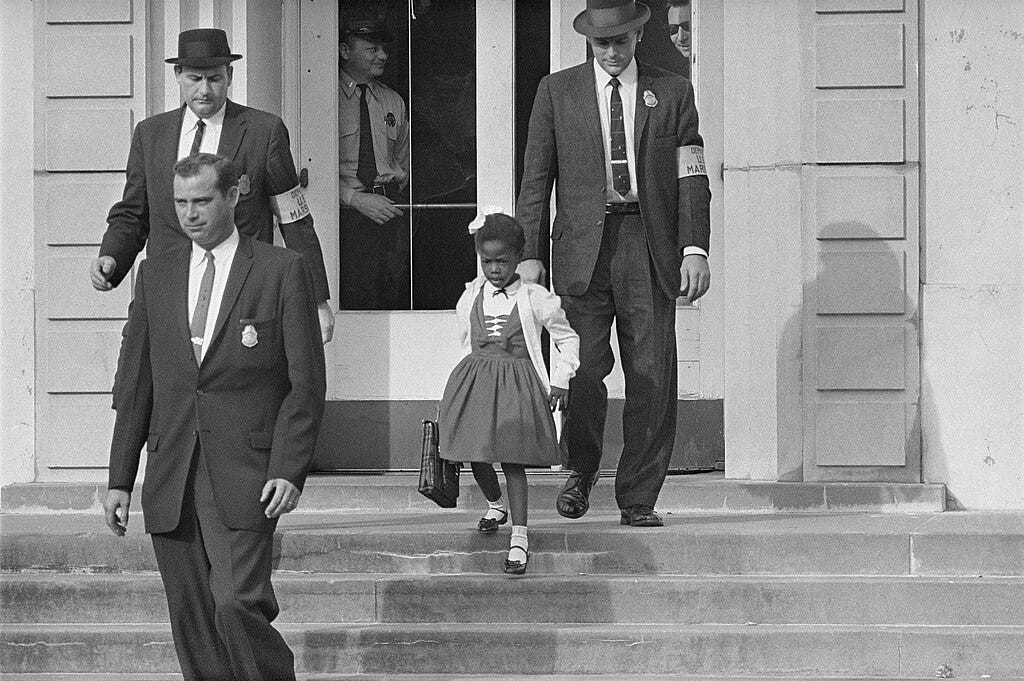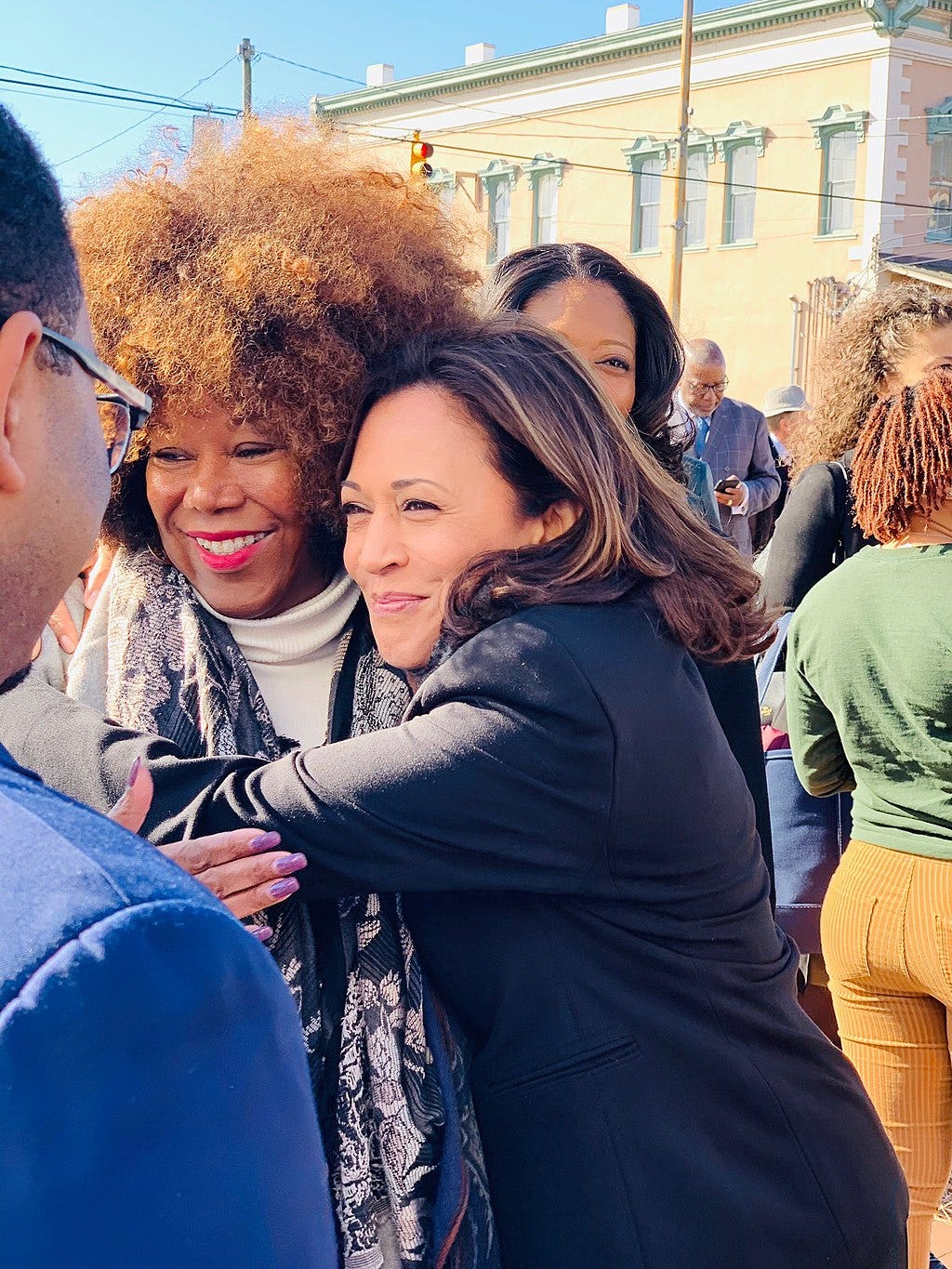65 Years Ago Today: Ruby Bridges Walks into History
On November 14, 1960, U.S. Marshals escorted six-year-old Ruby Bridges, who made history and broke barriers as the first Black child to desegregate the school, into the all-white public school William Frantz.
Four federal marshals, including Marshals Herschel Garner and Charles Burks, accompanied Bridges as she took her first steps to her new school amidst a crowd of angry white people.
Although Bridges remained courageous walking to the school, the crowd of segregationists that had gathered around the doors of William Frantz continued to hurl slurs, racist rhetoric (such as chants like “Two, four, six, eight, we don’t want to integrate”) and objects towards the first-grader. According to Lucille Bridges, Ruby’s mother, the crowd tossed tomatoes and eggs at them, eventually following them home as well. One of the women who protested Bridges’ enrollment carried around a Black doll inside a coffin, exposing the child to her first experiences with racism and creating a series of recurring nightmares for her.
As the crowd continued to shout verbal abuse and throw objects at Bridges, she recalled initially believing that the large crowd was a Mardi Gras parade.
“How was I to know that the crowd outside was there to harm me, that they didn’t want me there? No six-year-old would come to that conclusion unless you told them. And my parents didn’t do that,” said Bridges upon reflecting on the day at Berry College. “It speaks to the fact that racism really is a grown-up disease. Each and every one of our babies come into the world with a clean heart, a fresh start in life.”
As Bridges walked into the school, she recalled spending the day at the principal’s office alongside her mother. After she was promptly sent to the principal’s office, the large crowd of white protestors rushed into the school, bursting through each classroom to take 500 of their children out of the William Frantz building.
On Nov. 14, Bridges was unable to attend any of her classes due to the chaos caused by the crowd. On the second day, a white Methodist minister broke the boycott by the white parents, bringing his five-year-old daughter to the school.
Although the white parents once again began to bring their children to school, Bridges was ostracized as the only student in a class taught by 28-year-old teacher Barbara Henry.
Following her first day, Bridges and her family were met with more discrimination. The family was made to live under armed guard from federal marshals for the entire year. Her father, Abon, was also fired from his job and Ruby’s grandparents were forced to leave the farm they had lived on for years. Meanwhile, certain grocery stores also refused to sell products to Lucille.
The event was highly publicized, particularly in the media. Pictures taken of Bridges walking to the school on Nov. 14 were spread across the country to mixed responses. While some remained hateful, the pictures of Bridges walking up the school steps helped galvanize the civil rights movement.
The event was also famously immortalized in Norman Rockwell’s “The Problem We All Live With.” Published in Look Magazine in 1964, the painting depicts Bridges walking behind faceless marshals past a wall featuring racist graffiti and the remnants of a tomato that was thrown towards the six-year-old. While some praised Rockwell’s work for its social commentary, both the artist and Look Magazine received hate mail for the painting. The magazine, however, stood firmly behind the artist.
The painting is now considered to be one of the symbols of the civil rights movement.




